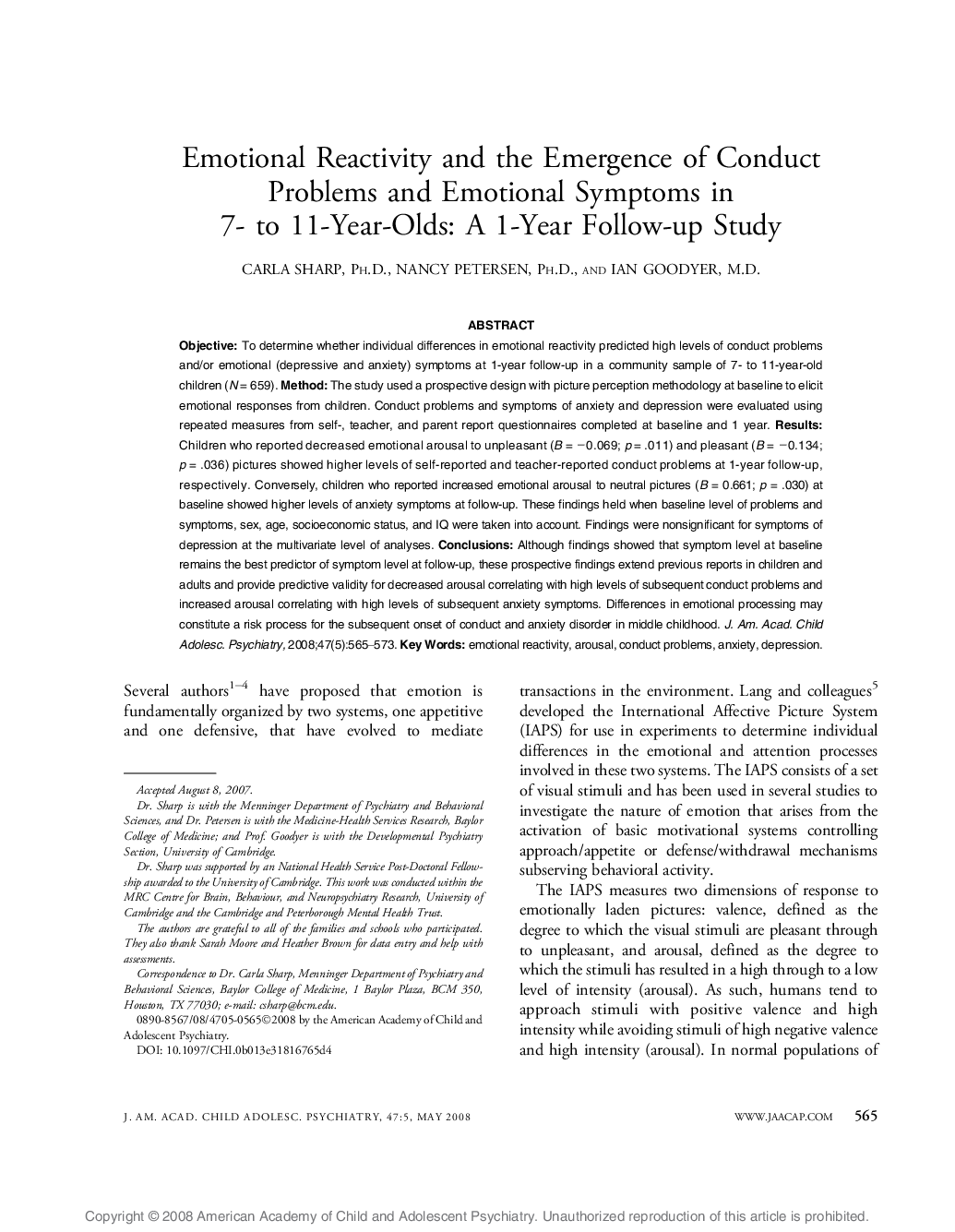| Article ID | Journal | Published Year | Pages | File Type |
|---|---|---|---|---|
| 324908 | Journal of the American Academy of Child & Adolescent Psychiatry | 2008 | 9 Pages |
ABSTRACTObjectiveTo determine whether individual differences in emotional reactivity predicted high levels of conduct problems and/or emotional (depressive and anxiety) symptoms at 1-year follow-up in a community sample of 7- to 11-year-old children (N = 659).MethodThe study used a prospective design with picture perception methodology at baseline to elicit emotional responses from children. Conduct problems and symptoms of anxiety and depression were evaluated using repeated measures from self-, teacher, and parent report questionnaires completed at baseline and 1 year.ResultsChildren who reported decreased emotional arousal to unpleasant (B = −0.069; p = .011) and pleasant (B = −0.134; p = .036) pictures showed higher levels of self-reported and teacher-reported conduct problems at 1-year follow-up, respectively. Conversely, children who reported increased emotional arousal to neutral pictures (B = 0.661; p = .030) at baseline showed higher levels of anxiety symptoms at follow-up. These findings held when baseline level of problems and symptoms, sex, age, socioeconomic status, and IQ were taken into account. Findings were nonsignificant for symptoms of depression at the multivariate level of analyses.ConclusionsAlthough findings showed that symptom level at baseline remains the best predictor of symptom level at follow-up, these prospective findings extend previous reports in children and adults and provide predictive validity for decreased arousal correlating with high levels of subsequent conduct problems and increased arousal correlating with high levels of subsequent anxiety symptoms. Differences in emotional processing may constitute a risk process for the subsequent onset of conduct and anxiety disorder in middle childhood.
